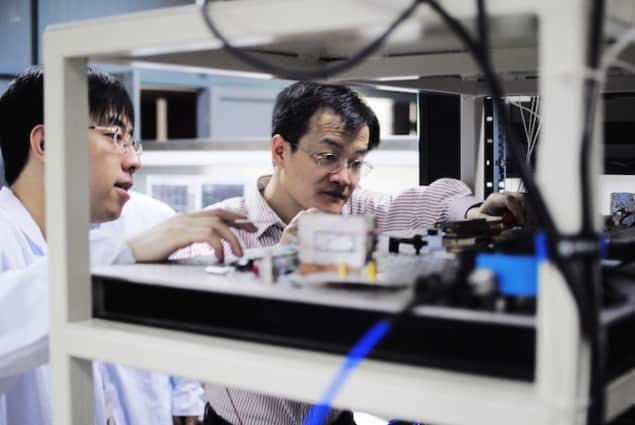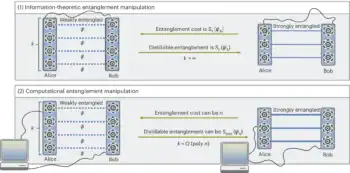
Researchers say they have observed parity-time symmetry breaking for the first time in an experiment. The result was obtained using a “dilation” technique on a single-spin system – a nitrogen-vacancy centre in diamond. The system could be used as a platform for studying new and exotic physics, such as new topological variants, quantum thermodynamics and quantum criticality, in non-Hermitian quantum systems.
According to current physics theories, the universe is governed by certain fundamental symmetries. One of these looks at the relation between parity (P) or “handedness” and time (T) and describes the oddness or evenness of a quantum particle and whether it is moving forwards or backwards in time. When a PT transformation is applied to a quantum system it appears the same as the original.
Physicists are always on the look-out for signs of PT-violation, however, because this would indicate the presence of new physics. They would also like to be able to break the symmetry of quantum systems, like those containing single spins. This would allow them to control these systems – something that should be important for understanding quantum interactions and developing novel devices (such as quantum simulators and quantum sensors) based on these interactions.
Dilated system
Xing Rong from the Hefei National Laboratory for Physical Sciences at the University of Science and Technology of China and colleagues used a nitrogen-vacancy (NV) centre in diamond in their experiments.These defects occur when two neighbouring carbon atoms in diamond are replaced by a nitrogen atom with an extra electron and an empty lattice site. The electron is a single-spin system that is governed by a general (non-Hermitian) PT symmetric Hamiltonian and the researchers can manipulate the system by changing the electron spin state.
The researchers “dilated” their system, which means they extended it to a larger system – in this case, to one that is governed by a non-classical Hermitian Hamiltonian. In quantum mechanics, a Hamiltonian is an operator describing the energy of a system. The PT symmetry and Hermitian are two mathematical terms describing the properties of Hamiltonians.
In their work, Rong and colleagues applied a magnetic field to the axis of the NV centre. They then applied oscillating microwave pulses to it, so that they could finely control the NV centre and change the P and T direction of the system, causing it to break.
A universal platform?
“That the Hamiltonian is Hermitian is a fundamental axiom of quantum mechanics,” explains Rong. “There is a class of exotic non-Hermitian Hamiltonians, however, that also satisfy PT symmetry. While researchers have experimentally investigated the concepts of PT symmetry in various classical systems, one of the most anticipated breakthroughs in this field is to observe PT symmetry breaking in non-classical quantum systems.”
The new experiments have now allowed the researchers to do just this.
“The information we extracted from the dynamics in our system extends and deepens our understanding of quantum physics,” team leader Jiangfeng Du tells Physics World. “The dilation method we employed is a general one and the single spin in the NV centre could serve as a universal platform for studying some exotic physics of non-Hermitian Hamiltonians.”
The research is detailed in Science 10.1126/science.aaw8205.



